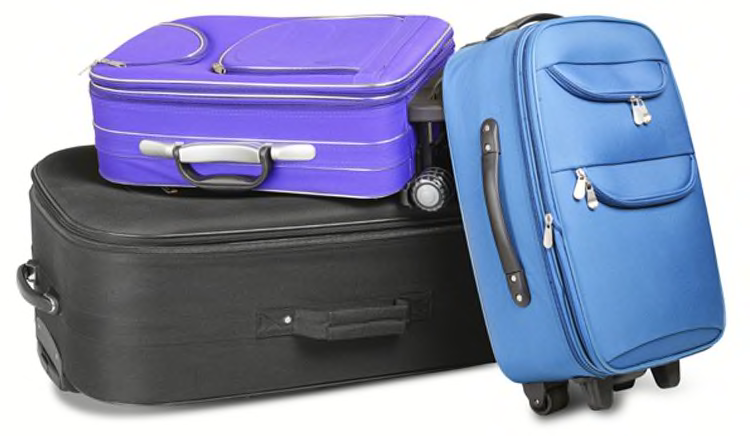Leading an adventurous and well-traveled life comes with baggage. Well, luggage at least.
But figuring out which bag to take with you isn’t always easy. With countless styles, sizes, and prices to compare, shopping for luggage can be overwhelming. To help you find the right bag or bags, here are the factors about how you travel to consider, details on luggage types, luggage features to look for, and other shopping tips. Bon voyage!
Deciding What You Need
How Do You Travel?
Do you mostly fly, drive, or go on cruises? For airplane travel, familiarize yourself with the luggage rules of the airlines you plan to fly on. If you go on road trips, look for bags that are pliable enough to maximize your trunk space. For cruise ships—which stack baggage in the boat’s belly before departure—flat, rigid luggage is best.
How Will You Store Your Luggage?
Once the luggage gets home, where will you put it? Hard-sided bags are the most unforgiving; you can’t squeeze them into a storage space. Soft-sided, structured bags have a little forgiveness on the front and back. If you have no place to store a stand-up suitcase, you may have to limit yourself to duffels or bags.
What Size Luggage Do You Need?
This will depend mainly on the length of your trip and, if you are flying, airline luggage restrictions. It also depends on what you’ll need while you are away. If you mostly travel for business, you’ll need enough room for business attire; for vacations, you’ll have more leeway on what to bring. Check Our Latest Luggage Ratings for More.
Local
The latest news from around North Texas.
Best Luggage Brands and Retailers From CR's Survey
For some on-the-ground intel about various luggage brands out there, CR turned to our members. In CR's Fall 2018 survey on members’ travel behaviors and luggage preferences, we gathered data on 12,626 carry-ons representing 21 brands, including American Tourister, Briggs & Riley, Delsey, Samsonite, Travelpro, and Tumi. Members also told us about their experiences with 25,551 suitcases that they check when flying; 32 checked-luggage brands were covered, including American Tourister, Delsey, Ricardo Beverly Hills, Samsonite, and Travelpro.
Members told us the features they care about most, with the top two being a suitcase's wheelability, cited by 64 percent of respondents, and its durability, cited by 58 percent. Of these, durability—how well zippers, handles, fabric, and other features hold up—had the strongest correlation to members' overall satisfaction with their luggage.
Members also told us how easy their luggage is to carry, pack, and, for carry-ons, stow in airplane overhead bins. Four carry-on brands and five checked suitcase brands gained top overall satisfaction scores.
Another important factor in your luggage-shopping experience? How easy it is to make a purchase, the quality of customer service, and—if you're buying online—how easy it is to use the website. So, we used the responses of nearly 17,000 members who purchased new luggage within the past two years to rate 29 luggage retailers.Luggage Ratings
Types of Luggage
Take a look at the three main types of luggage.
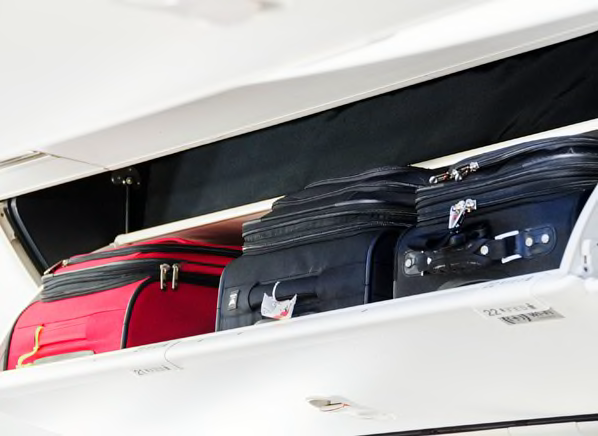
Carry-On Luggage
Carry-on bags are convenient for air travel because you can avoid having to check them in when you fly. But they must fit either under a seat or in the overhead bin. For domestic flights, your carry-on can be no larger than 22 inches high by 14 inches wide by 9 inches deep. (The maximum linear size is 45 inches, but none of the dimensions can exceed the aforementioned measurements.)
Measure the height of your luggage from the floor to the top of the handle in its lowered position. (If your luggage has wheels, they count toward the overall height.) Depth is measured from front to back, and width from side to side.
Some U.S. carriers permit larger carry-ons. For international flights, defined as those originating and ending outside the U.S., the size limit is generally smaller than for U.S. domestic flights.
If you are a frequent flyer on different carriers, you’ll have to decide whether you want to buy several carry-on bags to conform to the various size restrictions or if you’ll use one carry-on that meets the most restrictive rules. But even rule-abiding luggage isn’t a guarantee that your bags won’t be relegated to the plane’s underbelly, because the flight crew can impose further restrictions, even after boarding has begun.
Keep in mind that if you carry lithium batteries for recharging your electronic devices, federal airline safety rules require that you keep them in your carry-on. Just be sure to place them in their original packaging, or at least cover their contacts with nonmetallic tape, to prevent short circuits.
For more check our Carry-On Luggage Ratings.
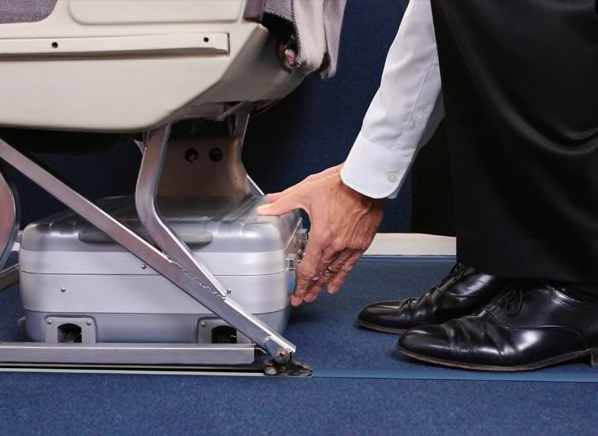
Personal Item Bag
A personal item bag has to fit underneath the seat in front of you on a plane. This category includes briefcases, tote bags, camera bags, laptop bags, and small backpacks. But you can get the most out of your allowed personal item if you buy a bag specifically designed for this purpose.
Often these bags contain compartments for your passport, phone, pen, and wallet, as well as a padded section for a laptop and a main section for clothes and overnight essentials. Many of these underseat bags can serve you well for a one- to two-day jaunt.
There is no standard size for these bags. For U.S. domestic flights, the measurement rules range from a generous 18x8x14 inches (Spirit) to a meager 17x9x10 inches (United); some airlines don’t specify dimensions.
Whether it fits under the seat can vary even within the same aircraft. Aisle seats are notorious for having the least room underneath. Before you shop, review the specifications for various airlines. You can also check the aircraft’s guidelines for onboard pet carriers—a reasonable proxy for the floor-to-underseat clearance.
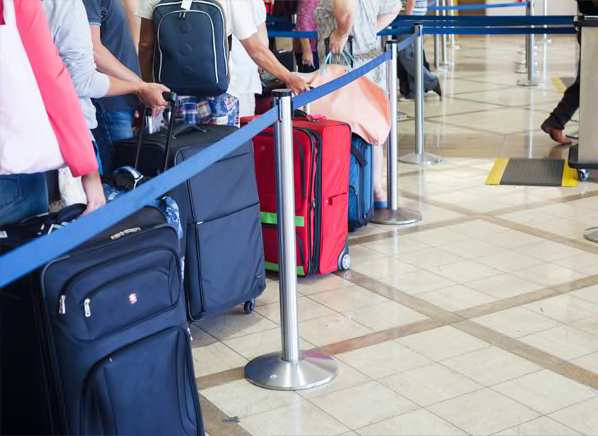
Checked Luggage
Any suitcase larger than carry-on size must be checked. The most common size options are 24 to 30 inches in height. You can find suitcases as large as 36 inches, but check with your carrier for size limits. There’s usually a weight limit, with extra fees applied for excess weight per bag.
Checked bag fees are common on major airlines’ domestic flights; they can run $30 for one bag, $40 for a second, and $150 for a third. (Southwest is unique in allowing two free checked bags.) Budget airlines such as Allegiant, Frontier, and Spirit also charge extra for carry-ons, with prices ranging from $10 to $75. You may get charged more if you wait to pay at the airport.
You may be able to avoid bag fees by purchasing your ticket with the airline’s branded credit card. Or, if you often fly on one airline, see whether it offers an annual subscription plan for checked bags.
For more check our Checked Luggage Ratings.
Anatomy of a Bag
Check out some important features to look for on your new luggage.
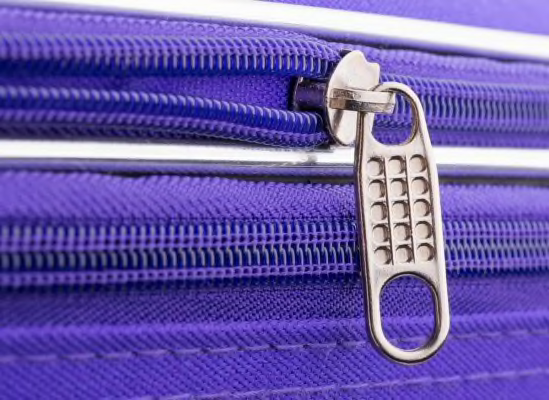
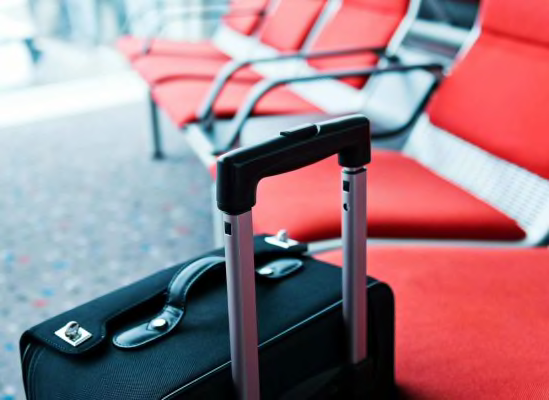
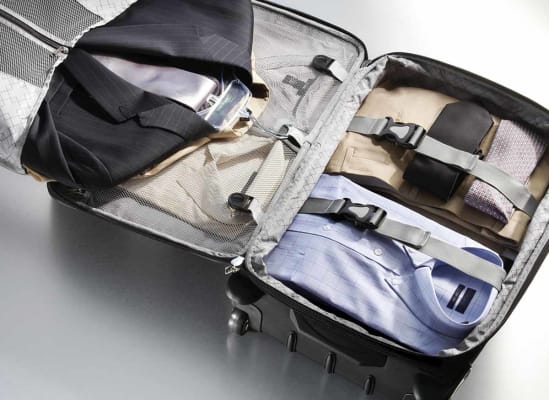
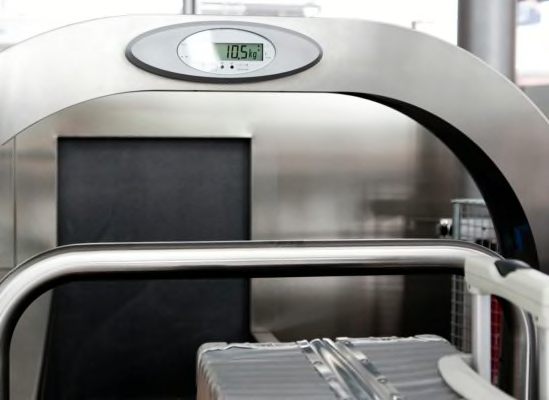
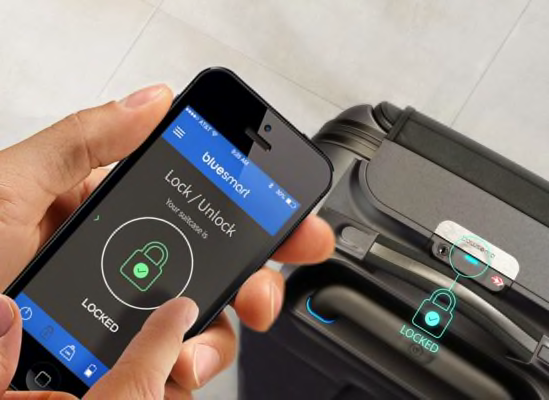
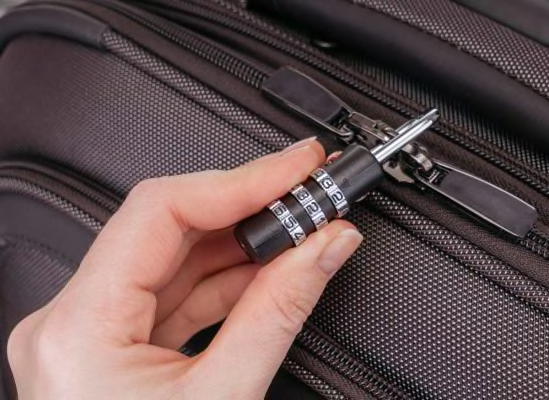
Zippers: It’s All in the Teeth
A lot can go wrong with a zipper. And that last thing you want is for it to break while you're traveling. Zippers come in two types: chain and coil. A chain zipper has two sets of interlocking teeth, usually made of metal. It’s better and stronger than a coil zipper, which slides on two parallel coils usually made of polyester. Chain zippers are much more difficult to break into than coil zippers, which can be pulled apart with a ballpoint pen and reclosed. Zippers can be an indication of the overall quality of the bag. A "YKK" zipper is widely believed in the industry to be the most reliable zipper on the market.
Luggage Features: Soft-Sided or Hard-Sided?
Soft-sided luggage continues to dominate the market, but hard-sided is quickly gaining popularity because of newer lightweight materials.
Soft-Sided Luggage
Soft-sided luggage is made of fabrics that yield, usually a woven nylon fabric, such as Cordura or ballistic nylon. Ballistic is the shinier of the two and over time can abrade, but abrasions will not compromise the strength of the fabric. Cordura is a little softer and abrasion-resistant, and preferable for an over-the-shoulder bag. If you consider a suitcase made of ripstop nylon, or “parachute material,” make sure that it is a high-denier fabric, which means it’s heavier.
Pros: These suitcases are usually lighter in weight than hard-sided suitcases. and they can flex and compress to conform to tight spaces, such as a plane’s overhead bin. This flexibility also enables you to squeeze in an extra outfit. These could also be easier pack into a car trunk and to store at home.
Cons: They’re not as protective as hard-sided suitcases and are vulnerable to ripping.
Hard-Sided Luggage
Today’s hard-shell or hard-sided luggage is made with high-tech plastics, such as ABS and polycarbonate, which are lightweight and durable. ABS is lighter, but polycarbonate is more durable. The most durable, but also the heaviest, is aluminum. Hard-sided luggage sometimes features a 50/50-split opening, allowing you to pack two sides equally and stabilize the contents with an X-strap or middle divider. Note: Because they close like a clamshell, you need double the surface space to open these. Most hard-sides are built this way, but some on the market have a top-lid opening.
Pros: These are best for protecting breakable contents, plus they offer better security because of integrated locks. Hard-sided luggage stacks easily, making it ideal for cruise ships, because luggage is typically stacked in the belly of the boat before departure. If you tend to overpack, a hard-sided piece will rein you in. There’s no chance of overstuffing it.
Cons: These can scuff and scratch easily. Also, few hard-sided suitcases have outside pockets.Luggage Ratings
Luggage Features: Wheels or No Wheels?
Wheeled suitcases make up at least two-thirds of all luggage sales today. If you plan on rolling your own luggage, your first decision is whether to buy a two-wheeler or a four-wheeler.
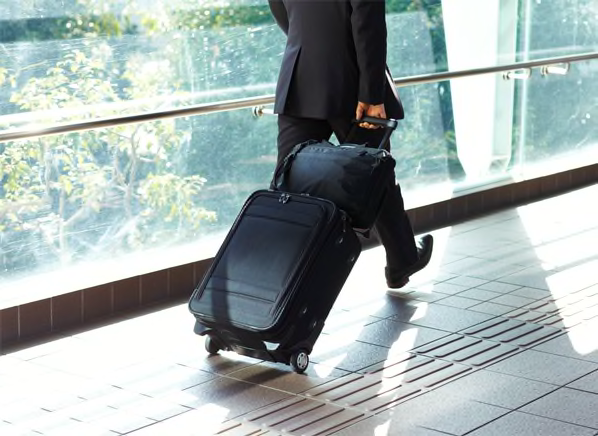
Two-Wheel Luggage
Suitcases with two wheels, also called rollers, utilize the same type of wheels found on in-line skates—they roll only forward and backward, not side to side. The suitcase rolls behind you as you pull it from the extending handle.
Pros: Wheels are recessed, which protects them from snapping off during rough handling. For city trips, two-wheelers are better than four-wheelers for clearing curbs and rolling on uneven surfaces, such as sidewalks or cobblestones.
Cons: Some travelers complain that the dragging position causes shoulder, wrist, or back pain. Also, it can be cumbersome to drag a two-wheeler in a crowded space because you need clearance between yourself and the bag. Plus, the recessed wheels take up valuable space in the bag’s interior packing area.

Four-Wheel Luggage
These are also known as spinners because each wheel swivels 360 degrees. You can push them, pull them, wheel them alongside yourself, and turn them in any direction.
Pros: Spinners are easier to navigate in tight spaces. A heavy or large suitcase may also be easier to manage with four wheels because unlike two-wheelers, you don’t have to drag the suitcase. Ergonomically, the spinner is a better choice than the roller because it does not put stress on your shoulder.
Cons: Wheels are externally mounted, not recessed, so they are vulnerable to snapping off. (Wheels attached with screws are more secure than those with rivets, according to experts.) Carry-ons with spinner wheels may have less room inside because the maximum allowable dimensions include the wheel. A spinner won’t remain stationary on an incline; you have to hold on to it or lay it on its side.
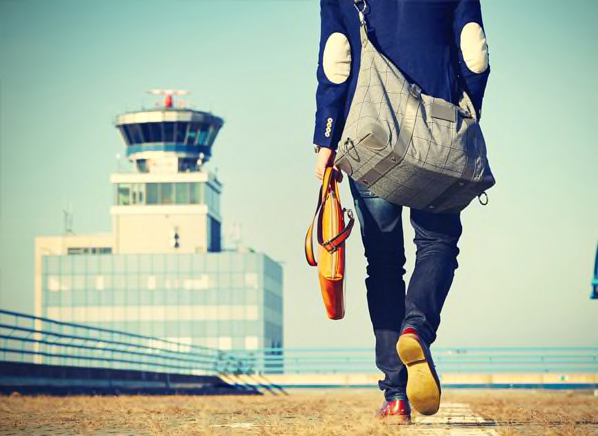
No-Wheel Luggage
You might want to forgo wheels under these circumstances:
• To ensure the maximum possible interior volume for your luggage. Wheels and handles eat into the space of a bag.
• You expect to take your bag on bumpy, rough, sandy, or icy surfaces, where wheels are difficult to manage.
• You won’t have to ever handle your own luggage—for instance, on a luxury tour.
More Luggage Shopping Tips
If you shop at a store, use the following tips to make sure a piece of luggage is right for you. If you order online, carefully read the description and warranty information on the website, and as soon as you receive the item, run it through these same tests:
Break Out the Tape Measure
Ignore tags, labels, or promotions that proclaim “official carry-on luggage.” There’s no regulation that dictates carry-on size—airlines impose their own restrictions, and the limits can vary among airlines and even among aircraft. Know the rules of the airlines you plan to fly. Measure the dimensions yourself and make sure the measurements account for all parts, including outer pouches, wheels, and handles.
Hold That Handle
Check the wrist angle and the feel of the grip. For maximum durability, the handle should have little to no wiggling or rattling as you pull the bag. Also check for smooth movement as you pull it up and retract it.
Wheel It Around
The wheels should roll smoothly and stay in place. Gently jiggle the wheels with your hands to make sure they are firmly attached.
Check the Interior Capacity
The outside measurements are important, but don’t forget to consider how roomy the inside is. This can be difficult to do because many manufacturers do not disclose the interior volume. So look for the features that maximize interior space. These include:
• Squared edges: Curved corners cut space.
• Integrated outer compartments: Outside zip compartments should be on the same geometric plane as the main part of the bag—protrusions waste space.
• No wheels or handles: If you really need to make the most of every interior inch, forgo wheels and handles. They reduce total packable space.
Check the Warranty
If you want a bag for the long haul, get the one with the best manufacturer’s warranty. A lifetime warranty to repair or replace the bag is, of course, the best option. Check the warranty for specific requirements, such as exclusions for when an airline damages your suitcase. Briggs & Riley, for example, has a generous policy. The perennial high-scorer in CR’s luggage surveys offers a “Simple As That” guarantee. It’ll repair all functional (not cosmetic) aspects of its bags for each bag’s lifetime, even if you no longer have your receipt and didn’t register your luggage with the company.
